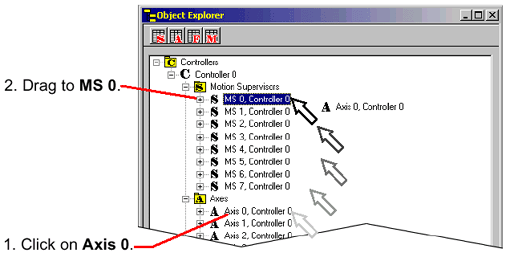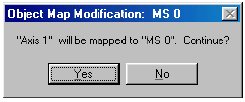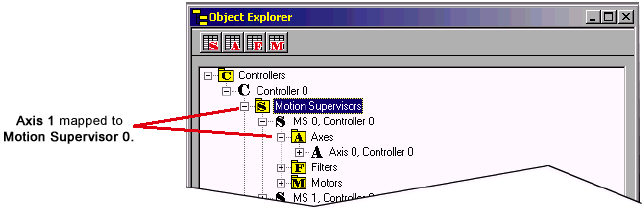| CHAPTER 2 Motion Console |
|
Mapping One Object to AnotherTo map Axis 1 to MS 0, use the cursor to select the Axis 1 object, then drag it into MS 0. 
A dialog box will be displayed to confirm the object mapping: 
To confirm the object mapping, click on the Yes button. The Object Explorer will now show Axis 1 mapped to Motion Supervisor 0: 
To map several objects to their "default" sub-object, i.e., the one with the same number, use the "Sub-Object Map" button on the Summary window. (For Motion Supervisors, this button is labeled "Axis Map.") If the entire row is selected and the button is clicked, then an Object List Configuration Dialog Box will be opened to map sub-objects to each object. If the <Shift> key is held down when the button is clicked, then each object will be mapped to its default sub-object.
Mapping Filters, and MotorsEach Axis has at least one Motor and Filter object associated with it. Mapping of these objects is performed exactly as demonstrated above with Axis objects. Before mapping these objects, it will help to answer the following questions:
Based upon the mechanical requirements and overall architecture of your system, you should proceed to mapping objects with the simplest configuration possible. Motor objects correlate to specific pieces of hardware having connection and power constraints. These can be determined by referring to the XMP Hardware section and the manufacturer's specifications. | |